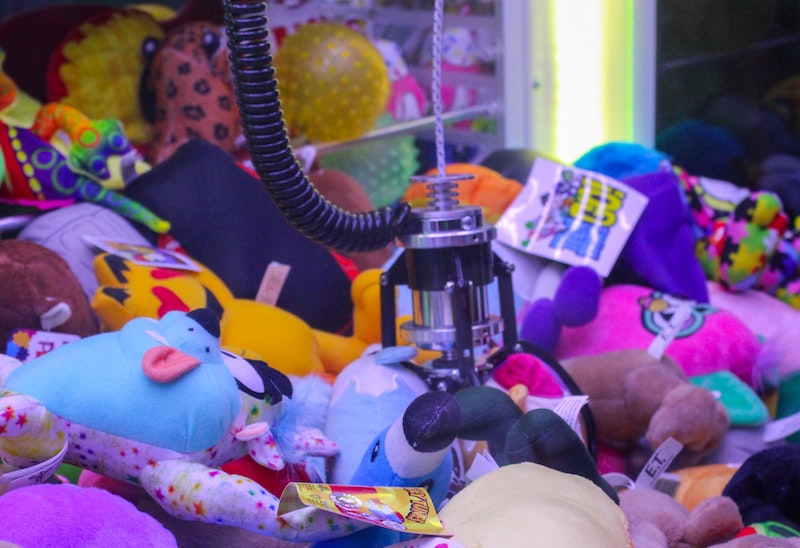Financial lessons for kids
This past spring we started paying our kids to do jobs around the house. People have all sorts of ideas about allowances, chores, and what we as parents should or shouldn’t deal out the dough for. This post isn’t about that. This post is about money.

It’s hard to learn about something you don’t actually get to touch. And we want to teach them things about money. So we decided it was time to help them touch money more and hopefully learn some things about it while they’re kids.
Learning to budget, avoid consumer debt, and not blow their entire allowance on an endless supply of Lucky Charms are just the beginning of what Matt and I want our kids to learn regarding money. Seriously, the list of life lessons around the green stuff can feel daunting when you’re just starting out with a bunch of marshmallow-hungry offspring. Here are five fiscal lessons our kids have gotten a little taste of.
Lesson #1: Give willingly (generosity)¶
They get to use their own money for presents from now on. In June we went to Target to pick out Father’s Day gifts for Matt. They each had $5 from me; if they wanted to get him something that cost more than that, they could use their own money to make up the difference. I was really happy that our four year old was completely willing to use some of her own coins (she’s the coin girl–we all go to her if we need to break quarters into dimes and nickels.)
Success numero dos: A couple of weeks later all three kids were invited to a birthday party. This time they had no money from me–just their own. They looked on the Target app for what they wanted to buy, brought their own money, and together they bought a nail polish kit to give to the birthday girl. It’s great to see them spend their own money to give something to somebody else!
Lesson #2: Save¶
Predictably, Matt and I have encouraged our kids to save part of their money… Predictably, our kids often spend their money on candy, toys, and that claw game with the inept 3-pronged grabber hovering over tempting toys or sweets. We keep up the “save” mantra even though it feels like they can’t hear us. Aaaand… stay out of their way so they can learn from their own experience.

Our ten year old skipped out of the house one day with five dollars in hand to go to the grocery store with Matt. I later learned why. She wanted to try that little claw game they have in front of the check-out. Five times she tried and five times the claw came up empty. Matt came home with a look that said “watch out!” Our daughter came in the door next, loudly making her way down the hall and across the house to her room. … We were extra gentle with her the rest of the day. Introspectively, I felt grateful she had that terrible experience now while she’s a kid; the price was small but the painful experience taught her a valuable lesson. She doesn’t play that game anymore.
Lesson #3: Interest is a great thing¶
In an effort to encourage saving, Matt and I are giving them the best rate of return the kids will likely ever get in their lives: 3%, compounded monthly (that’s like 38% a year)… I really wanted them to be motivated to keep money in the bank!
In the past I told them they weren’t allowed to touch their savings account money until they graduated from High School. That’s a great way to encourage them to never put any money in the bank, ever, by the way. So I learned. And I gave up that idea in favor of offering them interest. We showed them this chart and it really caught our eldest daughter’s interest (duh dum ssshh). They can take their money in and out of their accounts as they wish. They just need to ask Matt or me for a ride to the bank in order to take money out and they get paid interest on whatever the balance is in their accounts on the last day of each month.
Disclaimer: I only promised them this interest rate for the first year. After that we will evaluate whether we can afford to keep it up or not. I’m hoping they figure out how to break the bank with this over the next few years and we’ll move on to real world rates of return.
Lesson #4: Working is important¶
Each child gets paid in full if they do nearly all their chores each week. We’re loosely following an idea from a parenting blog called the family economy. I’m thrilled it works as well as it does–especially with my ten and eight year old.
Lesson #5: Having fun is important too¶
I love to play, go on trips, and get Lucky ChaItalian ice cream. I took each of my kids on an overnight “mom and me” date to fun places this summer before we had our fourth daughter. It was fantastic! I got to go places and do things I’ve been interested in doing for years. And I had a great time with each of my favorite human beings while doing it. Play is good! And you can plan and pay for it and feel good about spending money on it. Which is why I was totally fine with our ten year old stopping by the bank last week, withdrawing ten dollars, and spending $8.94 on a half dozen donuts to last her several days of donut snacks.
So those are some of our take-aways this summer. What are some lessons you are trying/have tried to teach your kids about money? What’s worked for them?
Happy budgeting!
— Christy
Comments
